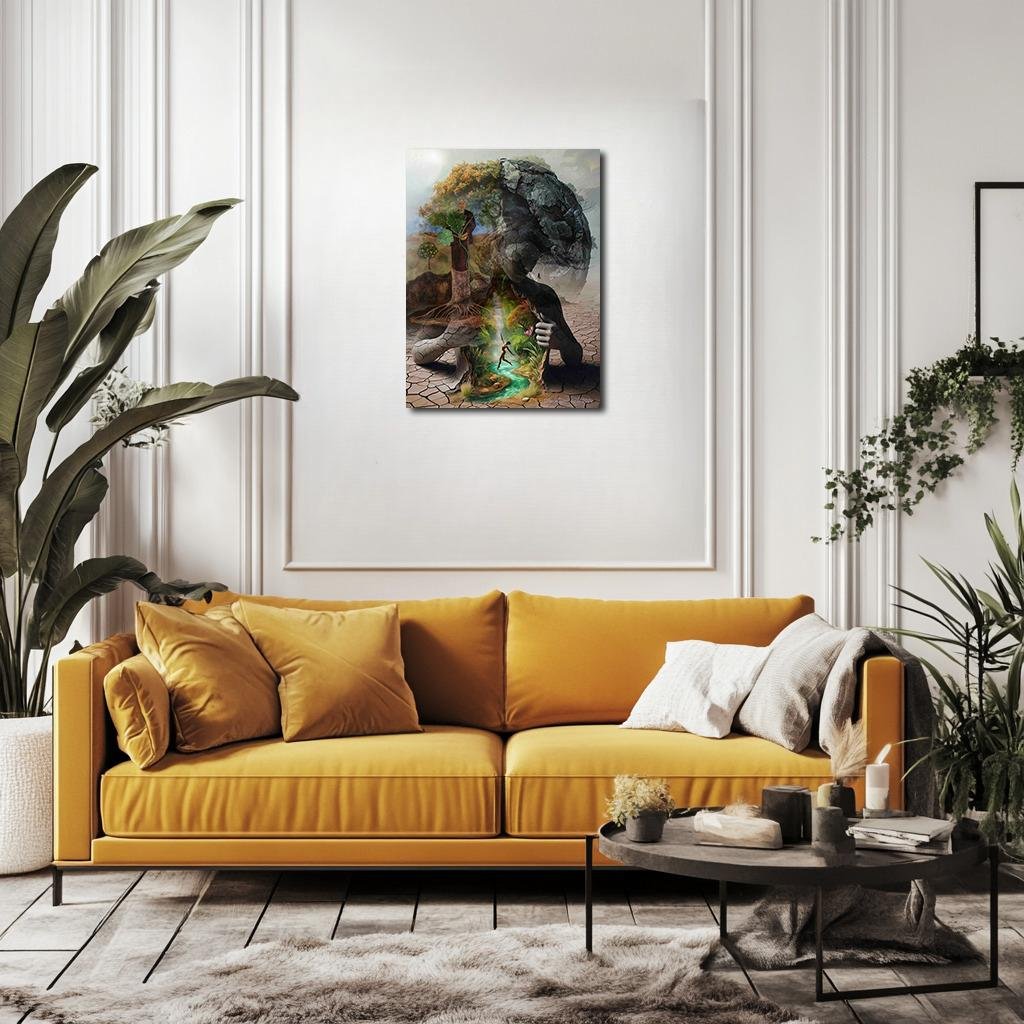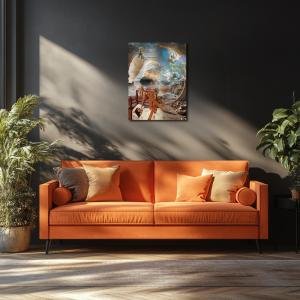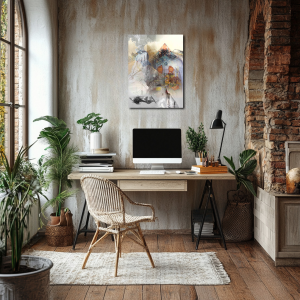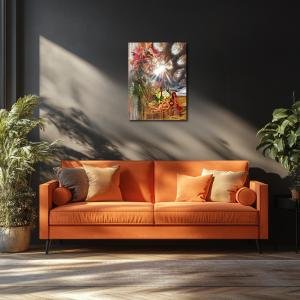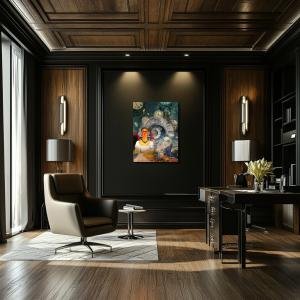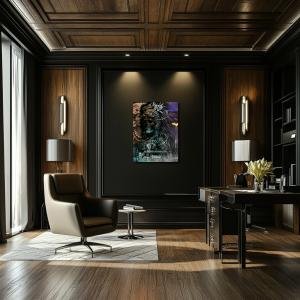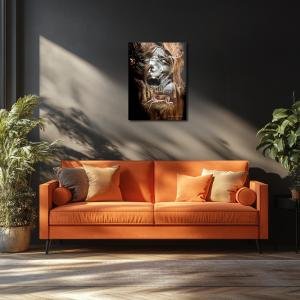Roots of Renewal: Frida’s Ode to Luther Burbank
Roots of Renewal reimagines Frida Kahlo’s Portrait of Luther Burbank as a mythic vision where death and life entwine in an endless dance. Through cracked ochres, lush emeralds, molten golds, and crystalline blues, the piece portrays Burbank as both soil and steward—his body breaking open to birth rivers, gardens, and rebirth. In this surreal tapestry of wounds and blooms, Kahlo’s tribute becomes a hymn to the sacred beauty of cycles, where every ending is seeded with beginning.
Please see Below for Details…
Hotline Order:
Mon - Fri: 07AM - 06PM
404-872-4663
This conceptual reimagining of Frida Kahlo’s Portrait of Luther Burbank deepens her exploration of life, death, and regeneration into a mythic landscape where decay and fertility are intertwined eternally. Titled Roots of Renewal , the piece transforms Burbank’s image into a living monument, where human flesh merges with soil, bark, and blossom—a testament to the sacred continuum between body and earth, death and rebirth.
At the heart of the composition stands Luther Burbank, partially human and partially tree, his legs dissolving into twisting roots that plunge deep into the cracked earth. His face, rendered with a solemn, quiet wisdom, emerges from the crown of a mighty, golden-leaved tree—an embodiment of his legacy not as a man who dominated nature, but as one who listened to its secret rhythms. In his hand, he cradles an enormous green leaf, veins pulsing outward like maps of unseen worlds, a symbol of the fragile covenant between creation and destruction.
Around this rooted figure blooms a dual reality: on one side, a barren, cracked desert stretches into emptiness, the parched bones of abandoned potential; on the other, lush gardens spill from the cracked torso of a giant figure, a surreal Eden where rivers flow and life dances in perpetual renewal. At the center of this inner garden, a small, liberated figure leaps into a crystalline waterfall, her body light and unburdened—a soul reborn from the body's ruin.
The colors within Roots of Renewal shift between severity and abundance, crafting a visual dialogue between entropy and flourishing. The desolate side of the image is coated in sun-bleached ochres, brittle grays, and washed-out taupes. These dry, exhausted hues evoke the inevitability of death, the finality of cycles when nourishment ceases. They crack across the figure’s form like old parchment, suggesting that every life, no matter how mighty, eventually folds into the waiting hands of the soil.
Yet from the broken earth and cracked skin bursts a symphony of color on the fertile side: brilliant emerald greens, velvety moss, lush canary yellows, and vibrant fuchsias explode into the wounded spaces. The river that courses through this oasis glimmers in aqua and sapphire, so vivid that it feels almost to hum with life. These colors suggest not just survival, but resurrection—a world that grows richer because of its wounds, not in spite of them.
The figure of Burbank himself is painted in tones of muted bronze and deep olive, blending seamlessly into the landscape he both emerges from and sustains. His muted color palette is deliberate, emphasizing that his importance lies not in heroic separateness, but in complete integration with the cycles he served. The roots from his body glisten with crimson undertones, subtle veins of living blood, suggesting that sacrifice is woven into the act of renewal.
Above the tree's golden canopy, the sky shifts from a dusty lavender near the barren side into a luminous, diffused gold above the garden. This gradient of light implies that hope is not an external force, but a phenomenon generated from within the wreckage—from the seeds buried beneath loss and drought.
When I created Roots of Renewal , I wanted to honor Frida Kahlo’s original vision of Luther Burbank as a figure who understood that death and nourishment are not opposites but partners. Kahlo painted Burbank literally feeding a tree from his corpse, refusing to sanitize the harsh, beautiful truth that life demands decay, that every fruit is rooted in a grave. In this reimagining, I sought to push that idea into a dreamscape where the human form becomes an ecosystem—where our brokenness leaks gardens, and our endings bloom into beginnings.
The compositional flow sweeps downward, tracing the descent of Burbank’s body into the earth, then curves upward again through the leaping figure and the erupting gardens. This cyclical movement reflects the endless loop of generation, decay, and regeneration. It is not a linear story but a spiral—a testament that in nature, as in human spirit, there is no true end, only a becoming.
In this world, Burbank is not a conqueror of nature but its humble child, its patient steward. His face, carved by weather and wisdom, watches not over dominion, but over the sacred, unstoppable blooming of life through death’s open doorway.
Add your review
Your email address will not be published. Required fields are marked *
Please login to write review!
Looks like there are no reviews yet.

